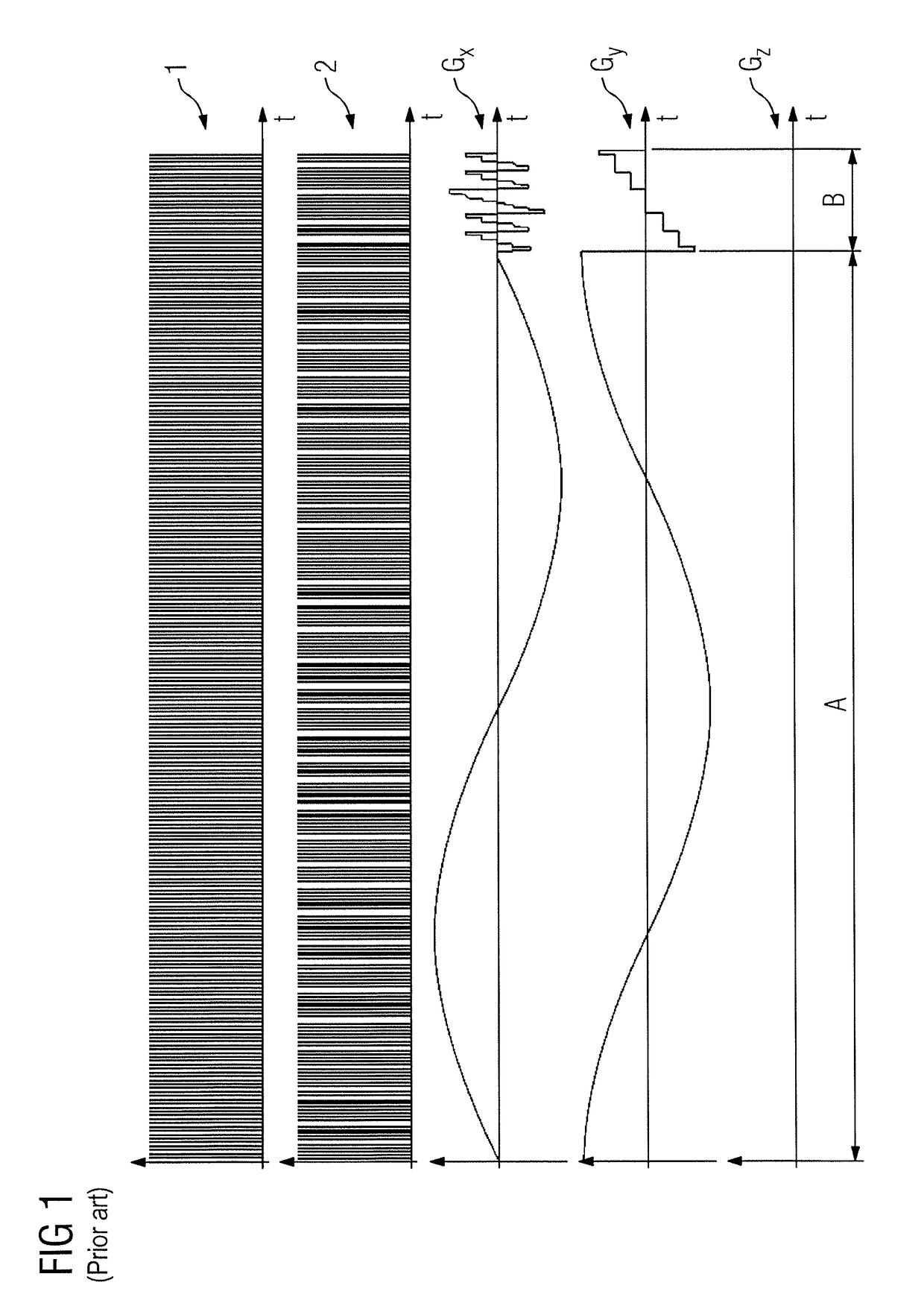Method and magnetic resonance apparatus for image acquisition
a magnetic resonance apparatus and image acquisition technology, applied in the field of image acquisition, can solve problems such as measurement errors, and achieve the effect of improving contrast and signal-to-noise ratio
- Summary
- Abstract
- Description
- Claims
- Application Information
AI Technical Summary
Benefits of technology
Problems solved by technology
Method used
Image
Examples
Embodiment Construction
[0033]FIG. 1 shows the workflow of a PETRA sequence as a magnetic resonance sequence, as is known in the prior art (for example DE 10 2010 041 446 A1, corresponding to U.S. Pat. No. 8,887,533), and that can be used for image acquisition in a magnetic resonance device. The first line in FIG. 1 shows the radiated radio-frequency excitation pulses 1; the second line shows the associated readout time periods 2. The excitation pulses 1 are respectively repeated at an interval of a repetition time TR which remains constant across the entire sequence. In the present exemplary embodiment, two phase coding gradients Gx and Gy are switched, such that a coding in the third direction (the slice direction, here the z-direction) is foregone (Gz=0).
[0034]If scanning takes place both in a first measurement segment A in which a first region of k-space is scanned radially along spokes and in a second measurement segment B in which the second region of k-space (that is not included by the first region...
PUM
 Login to View More
Login to View More Abstract
Description
Claims
Application Information
 Login to View More
Login to View More - R&D
- Intellectual Property
- Life Sciences
- Materials
- Tech Scout
- Unparalleled Data Quality
- Higher Quality Content
- 60% Fewer Hallucinations
Browse by: Latest US Patents, China's latest patents, Technical Efficacy Thesaurus, Application Domain, Technology Topic, Popular Technical Reports.
© 2025 PatSnap. All rights reserved.Legal|Privacy policy|Modern Slavery Act Transparency Statement|Sitemap|About US| Contact US: help@patsnap.com



